Summary: Large sheep station with some good birding areas and accommodation
Dates of visit: July 14 to 16, 2023
Charlotte Plains Station is a family-owned and operated sheep station near Cunnamulla in west Queensland. It offers a large (67,000 acres) property for birding along with accommodation options including cabins and camping.

There are two main entrances to the property; from the east it is 130km or so from Bollon, where you will see a large sign (photo below), while the western entrance is 31km east of Cunnamulla. Although the main road (the Balonne Highway) is sealed, all the roads within the station are unsealed, and after moderate rain may only be traversable by 4WD (until it dries out again) – so be warned. We had a 2WD and fine enough weather. Note there is little to no phone coverage.

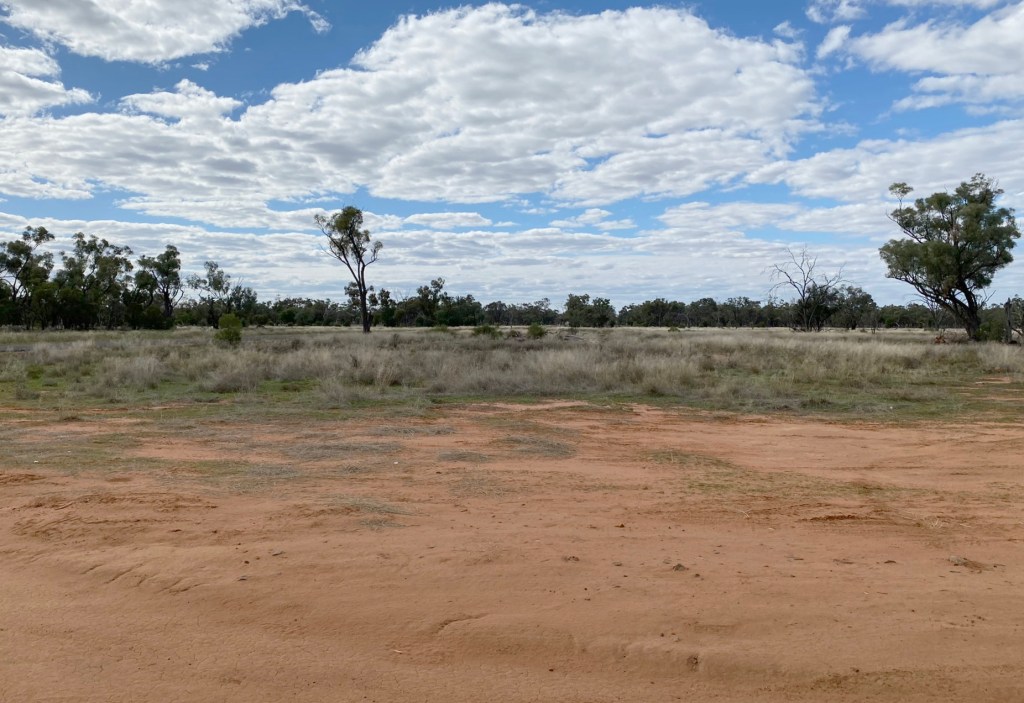

We ended up doing a little birding near the eastern entrance as some Pink Cockatoos had been reported there at the time. We didn’t see the cockatoos, but did see plenty of Jacky Winters, a couple of Chestnut-Rumped Thornbills, Hooded Robins, and some goats.

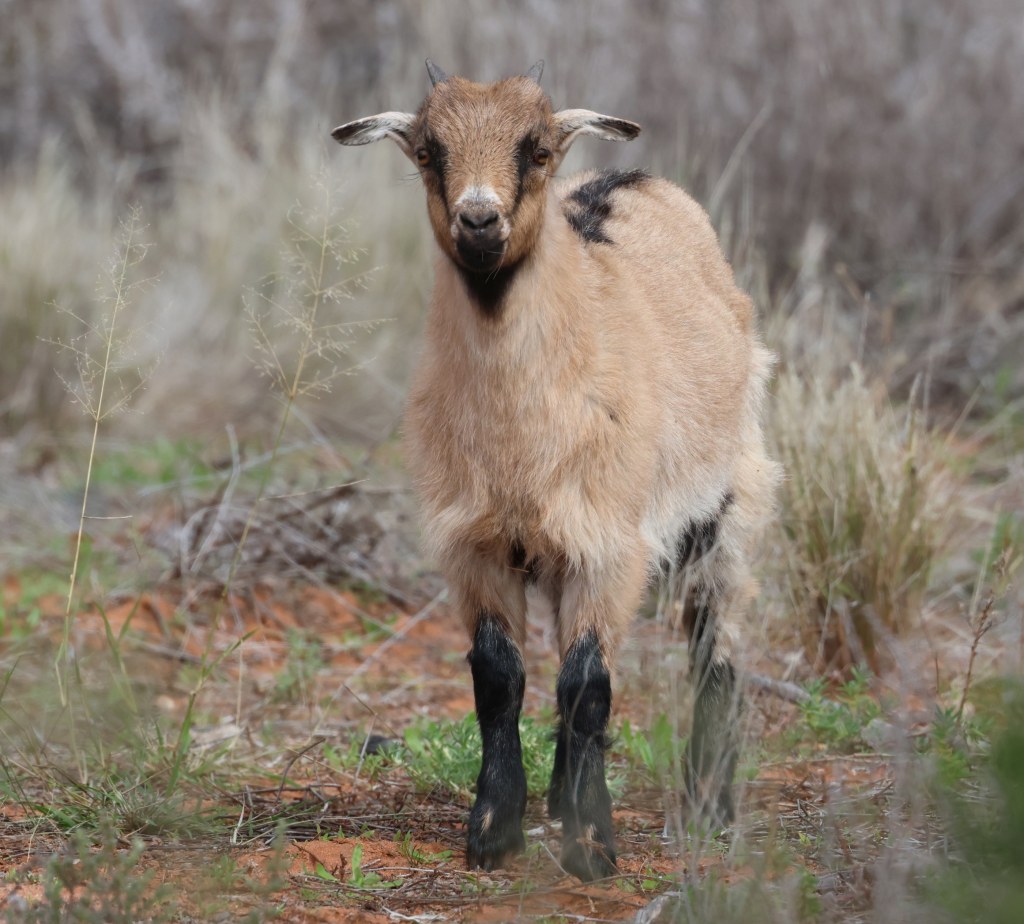
Another surprise was a pair of Southern Whitefaces, one of which seemed to be collecting nesting material.
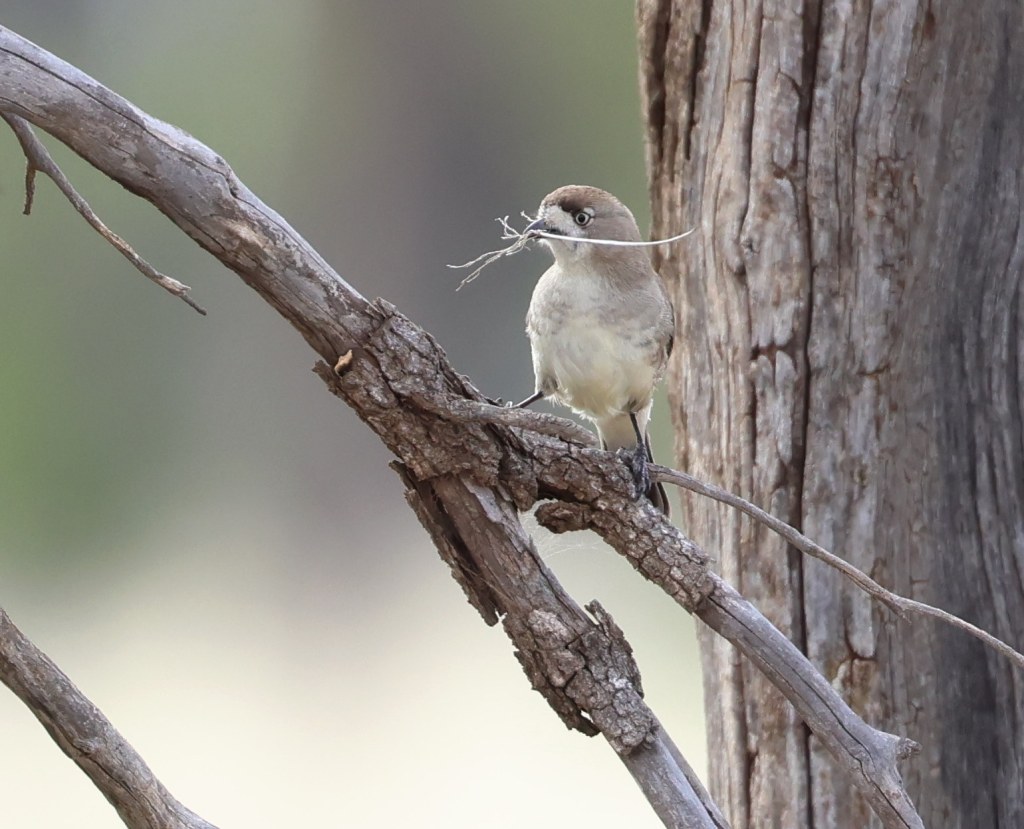

We ended up wandering across the main highway and found more Chestnut-Rumped Thornbills and Brown Treecreepers, and even a pair of Bourke’s Parrots. It makes you wonder whether all of these nondescript-looking dry scrub (typically semi-arid mallee bush) areas harbour interesting birds if you look hard enough!
Bore Campground
Three or four kilometres south of the entrance sign, the road splits with the left fork going to the Borehead Campground. There is a gate here that you must stop at and open to get your vehicle through. We stopped for longer than that though, as we spotted some Jacky Winters and then a pair of Brown Treecreepers, which kept us entertained for some time. We didn’t know yet that both these species are very common sights on the property!
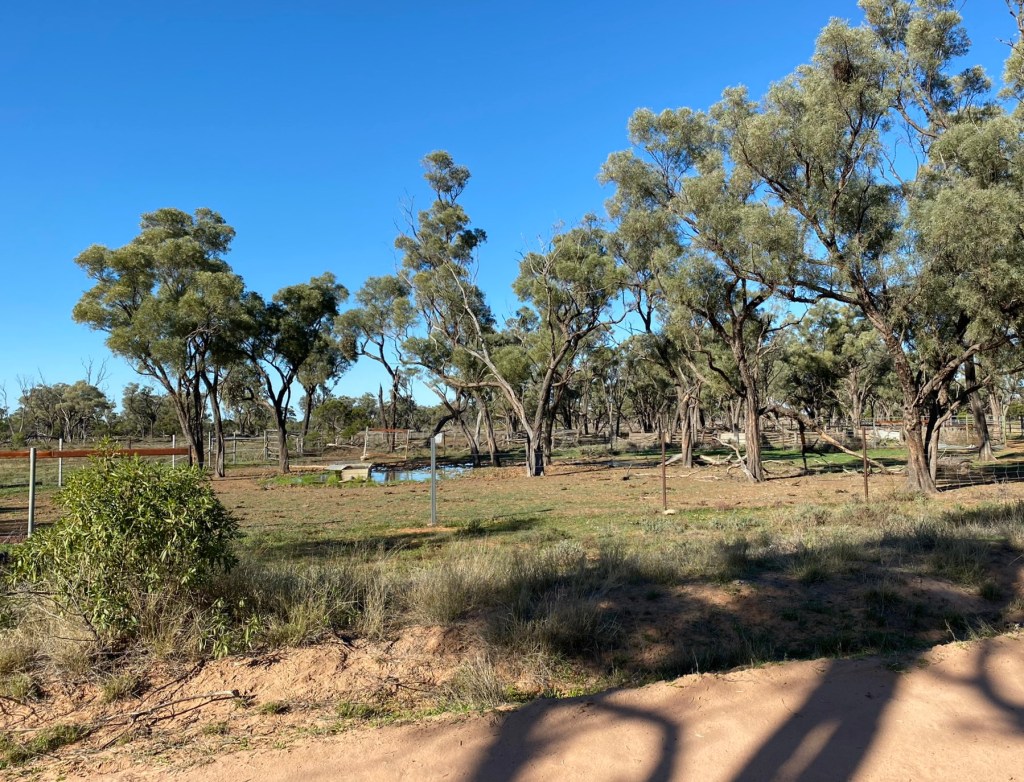


Not far from the gate is the enormous Borehead Campground, with the eponymous borehead providing the main attraction: it is a 561m-deep bore that was drilled in 1892 and provides a non-stop 42 degree flow of mineral-rich water, and there are usually plenty of people enjoying the warm bathing experience right where the water gushes out, or downstream in the canal, or even in one of the several bathtubs set up along the canal (perhaps with a beer or two!)



With so many people around it was a surprise to see two Black-Fronted Dotterels scurrying about near the water channels, and further down, a White-Faced Heron.
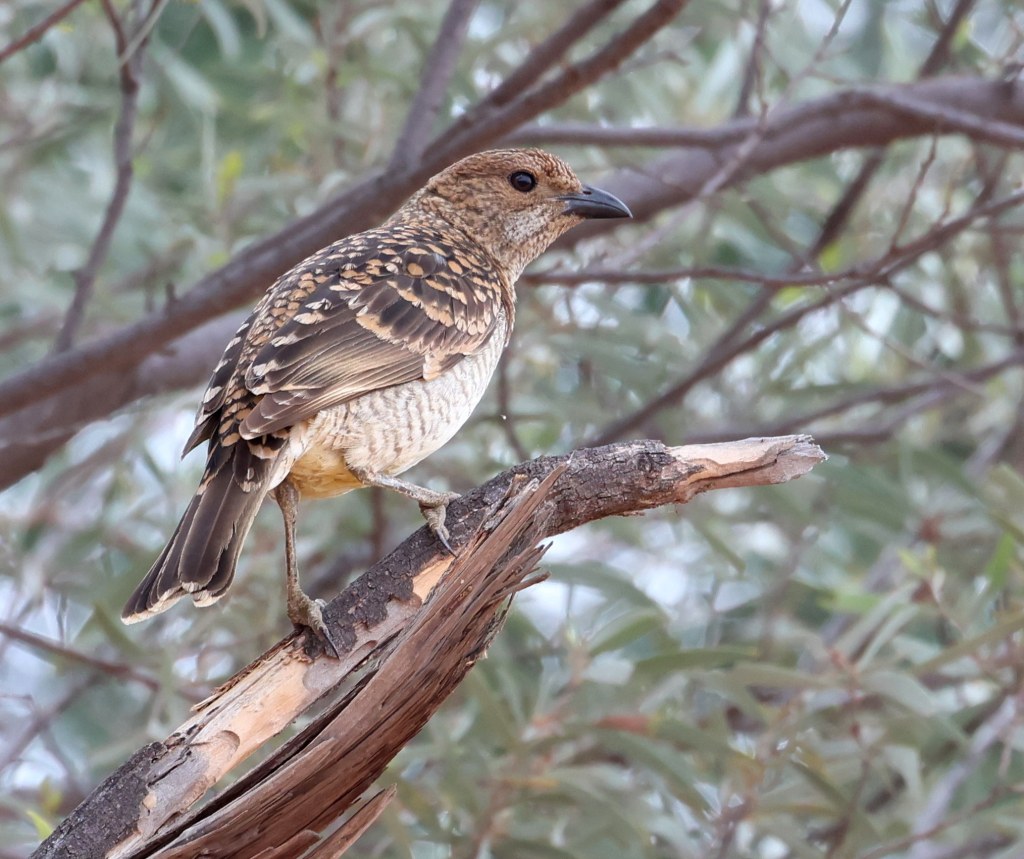

On the last morning at Charlotte Plains we revisited the Borehead Campground and found a Spotted Bowerbird, Hooded Robins and a big group of 45 Apostlebirds all foraging and hopping about right in the camp areas, including close to the ashy remains of camp fires. The robins and Apostlebirds in particular were clearly not very afraid of people at all.

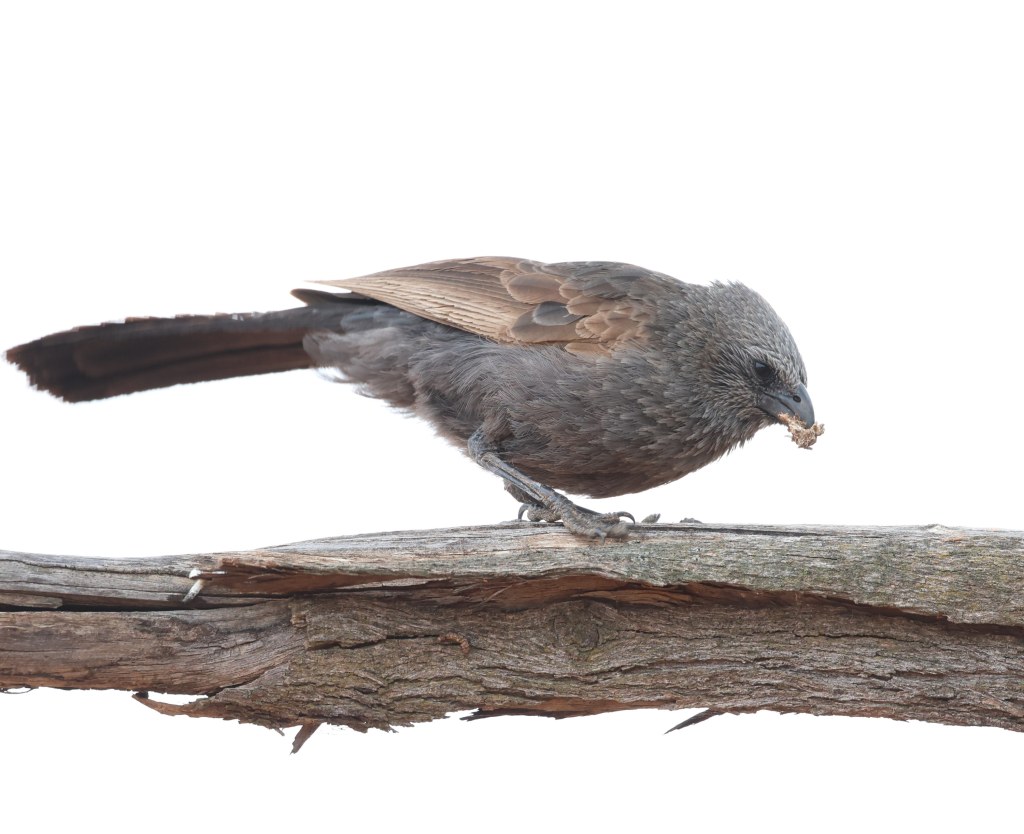
The bore provides enough water to provide for the stock on the whole property, and flows throughout via a system of canals and channels. We suspected most birds would be found near these waterways.
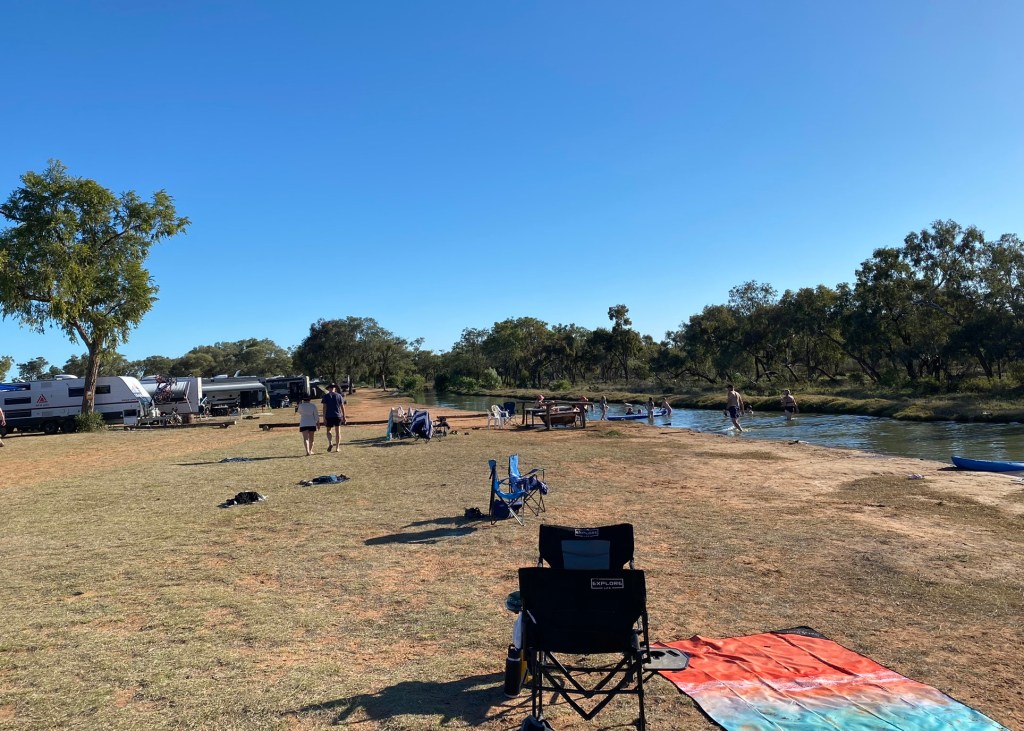


Just to the east of the Borehead Campground the water seemed to overflow and lay in large shallow pools, and here we saw several Galahs, Grey-Crowned Babblers and some Bluebonnets. Two of the Bluebonnets stayed put long enough for me to creep close enough for decent photos and videos – such obliging behaviour is rare from Bluebonnets in my experience, so it made me very happy!
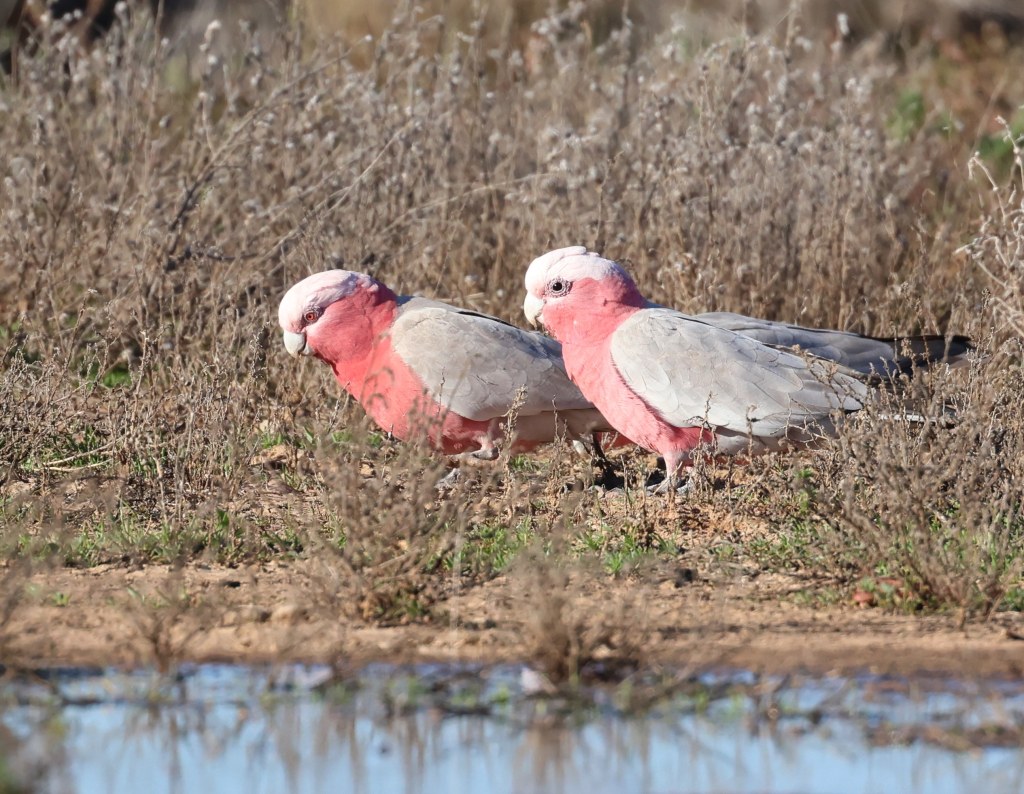

There were a few fairywrens hiding the in the brush between the road and the standing water, but they weren’t co-operative in showing themselves. Win some, lose some, I suppose.
Willie’s Bore Walk
We hadn’t found any Pink Cockatoos (also known as Major Mitchells’ Cockatoos) until the very last morning, when one flew across the road as we were driving towards Willie’s Bore Walk and landed briefly in a tree about 30 metres away. With its crest up it is an arresting photographic subject and indeed is much sought-after by bird photographers, and Charlotte Plains Station is supposed to be a decent enough place to find them. In the end we counted ourselves lucky to find one at all during our stay.

Anyway, we had first hit up Willie’s Bore Walk late in the afternoon on July 15 with overcast conditions. This track – really a road – goes for a kilometre or two and then winds back to the Borehead Campground but is not marked on the birding map of the property, which is perplexing as we were pleasantly surprised by the abundant birdlife we found there.

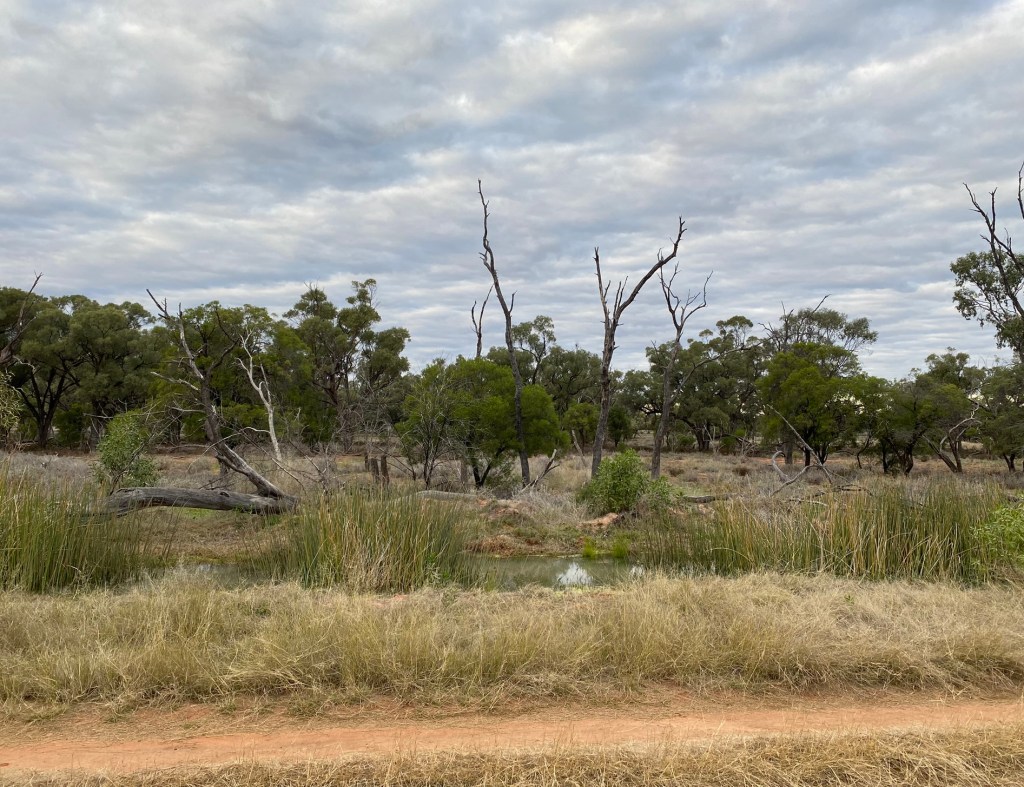
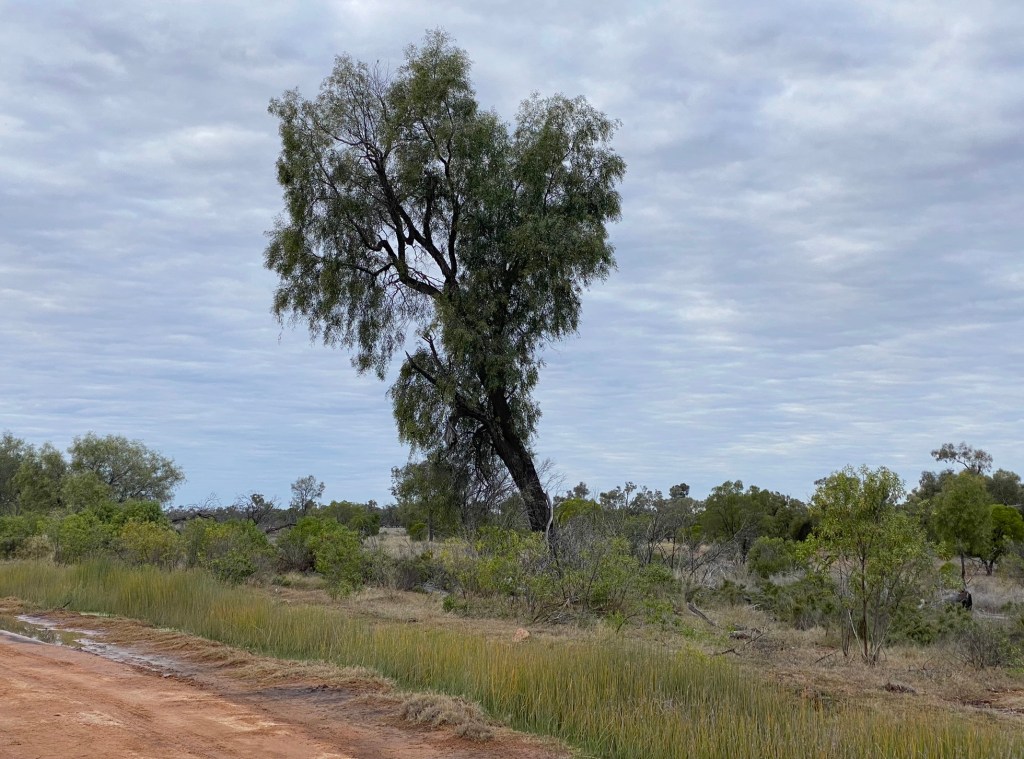
A bore water canal runs alongside the road with occasional patches of reeds, and plenty of variety of greenery on both sides of the road. We saw a Common Bronzewing, and several White-Plumed Honeyeaters dipping in the water of the canal, along with a group of Apostlebirds and crows (or ravens, who knows) hanging out together. Singing Honeyeaters, the now-known-to-be-common Jacky Winters and Hooded Robins, a Willie Wagtail, a Whistling Kite (flyover) were all accounted for, while we also heard Striped Honeyeater and Crested Bellbird calls.
We resolved to revisit this promising section the next morning and weren’t disappointed – far from it! As soon as we hopped out of the car we heard what sounded like the call of a Red-Browed Pardalote (“beep-beep, beep-beep-beep”), a bird we barely dared to hope for after dipping on it in both our West Queensland 2021 trip and the Red Centre 2023 trip. Fortunately we were able to follow the call and with patience we spotted two of these birds, with good enough views to make for a very satisyfing “lifer” encounter.

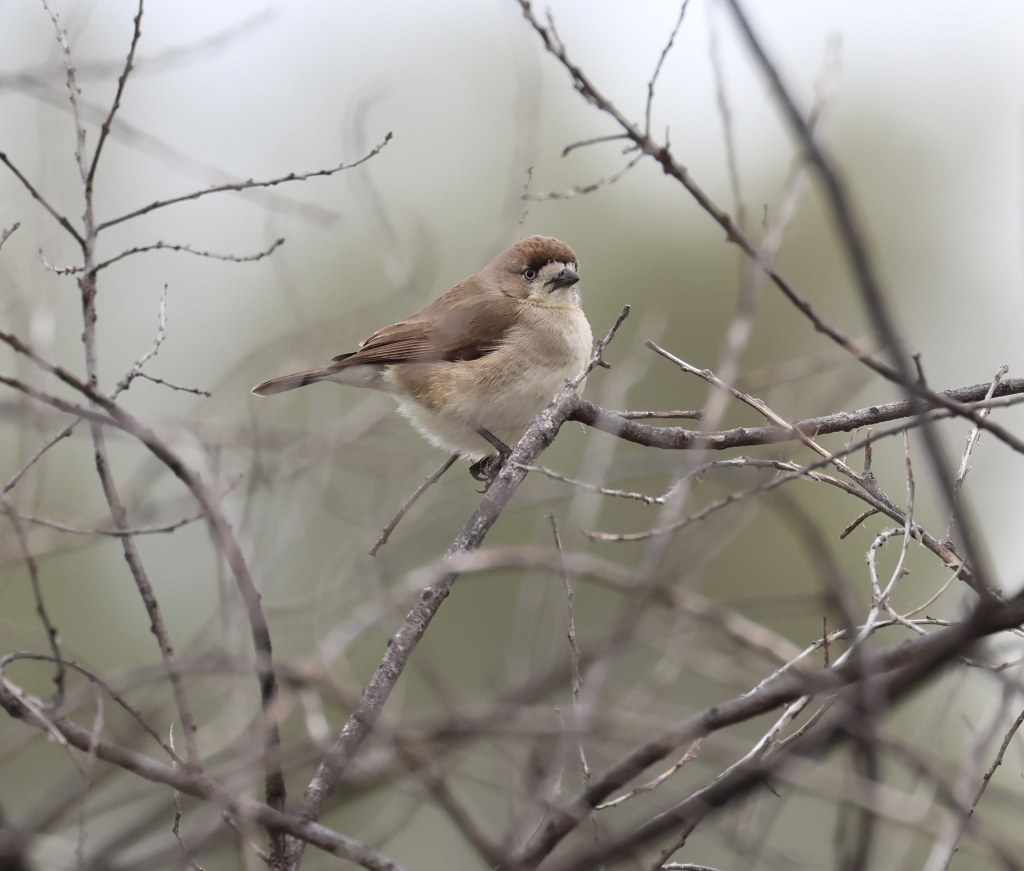
Southern Whiteface were also present here and we had our first look at a Mallee Ringneck, which had eluded us so far at Charlotte Plains. We also managed to spot the Striped Honeyeaters we’d only heard the day before, and experienced a quick Brown Falcon flyover.
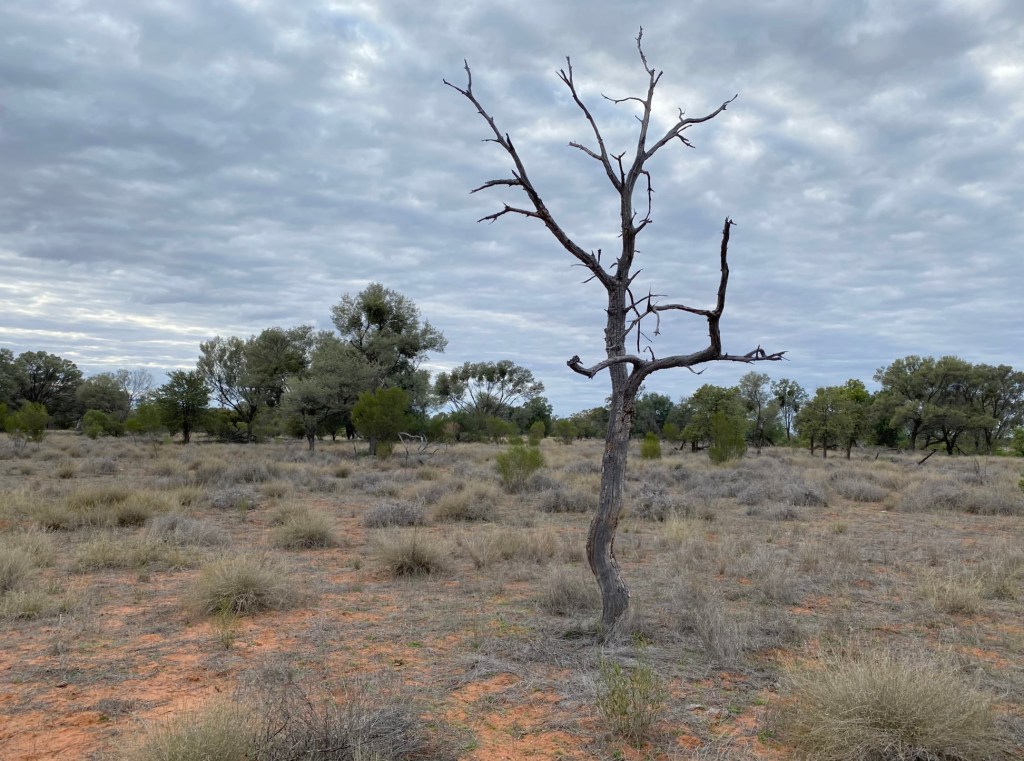

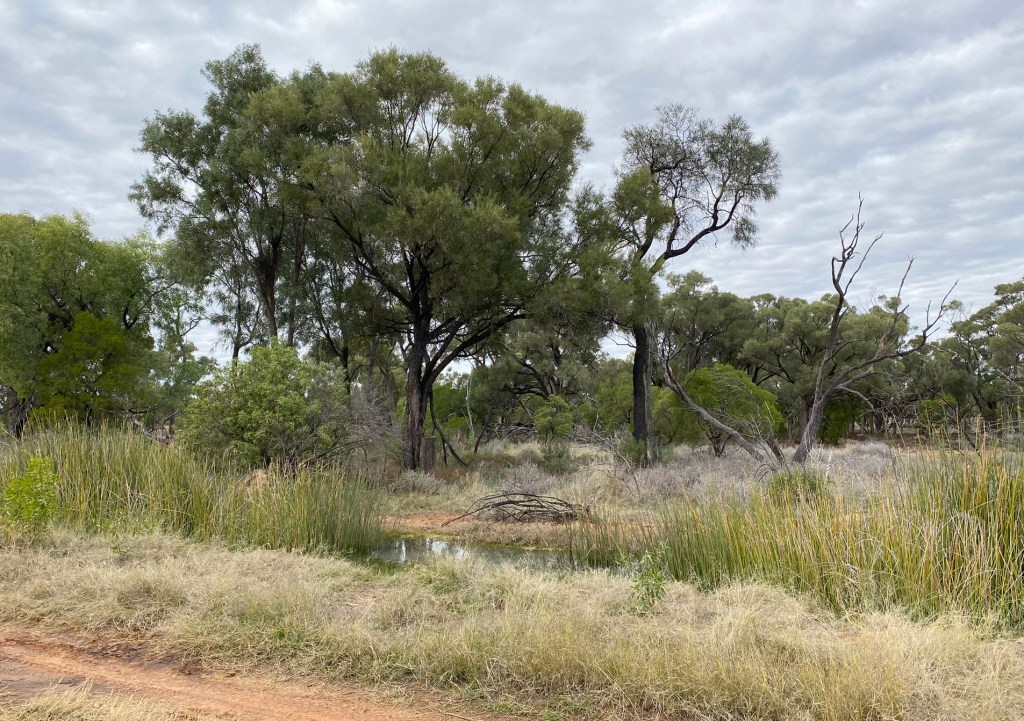
We counted well over a dozen White-Plumed Honeyeaters, and a single Brown Honeyeater. Some of the honeyeaters were joining the resident Willie Wagtail in aerially trying to snatch insects from where they were swarming above the water. With only the occasional vehicle passing through (its occupants no doubt looking oddly at the bird photographers), the easy road birding coupled with the wander-into-the-dry-scrub-to-chase-a-bird-if-you-feel-like-it vibe, there isn’t much not to like about Willie’s Bore Walk.

Jack’s Hut
Jack’s Hut is a small historical area that used to host camel rides and is listed on the station’s birdwatching mud-map as a place to find Bourke’s Parrots, Brown Treecreepers, and Red-Capped Robins.



We certainly found Brown Treecreepers, but they aren’t at all unusual on the property – we found several at every place we birded.


We explored the tracks behind Jack’s Hut for a while before concluding that the birding was fairly average compared to elsewhere on the station, though we did find one of the promised Red-Capped Robins, which was nice.
Shearer’s Quarters and area
A much quieter accommodation option than the sprawling Borehead Campground is the Shearers’ Quarters, which has space for camping as well as several very small cabins with a communal kitchen and batheroom set up. This is where we stayed.
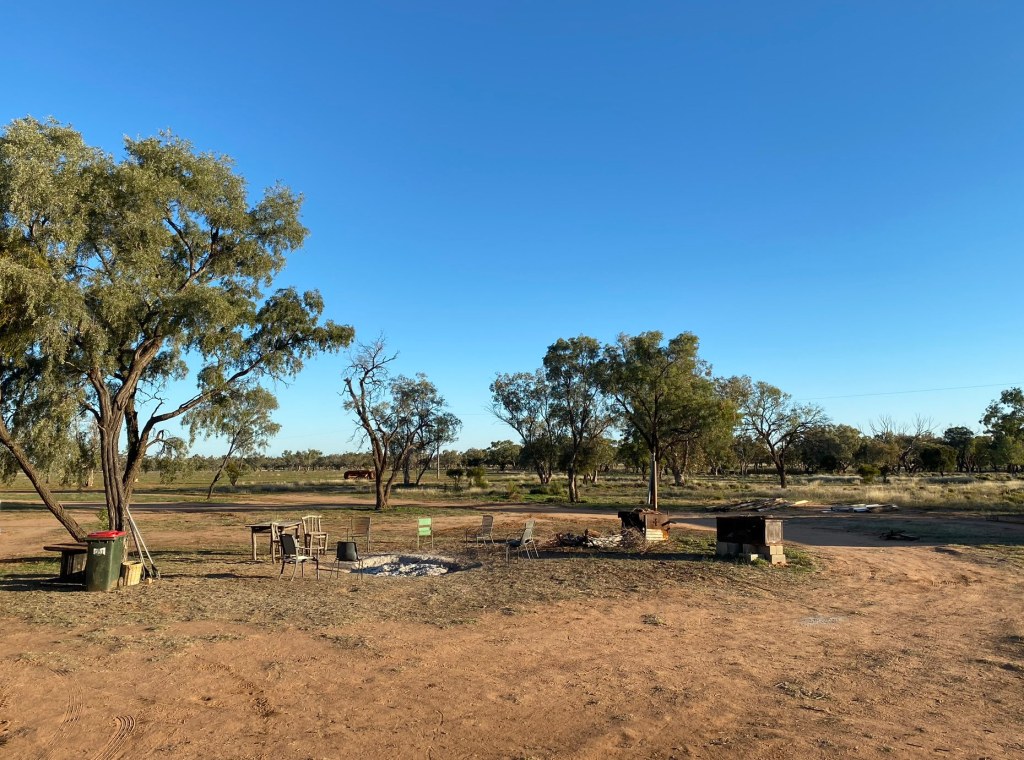
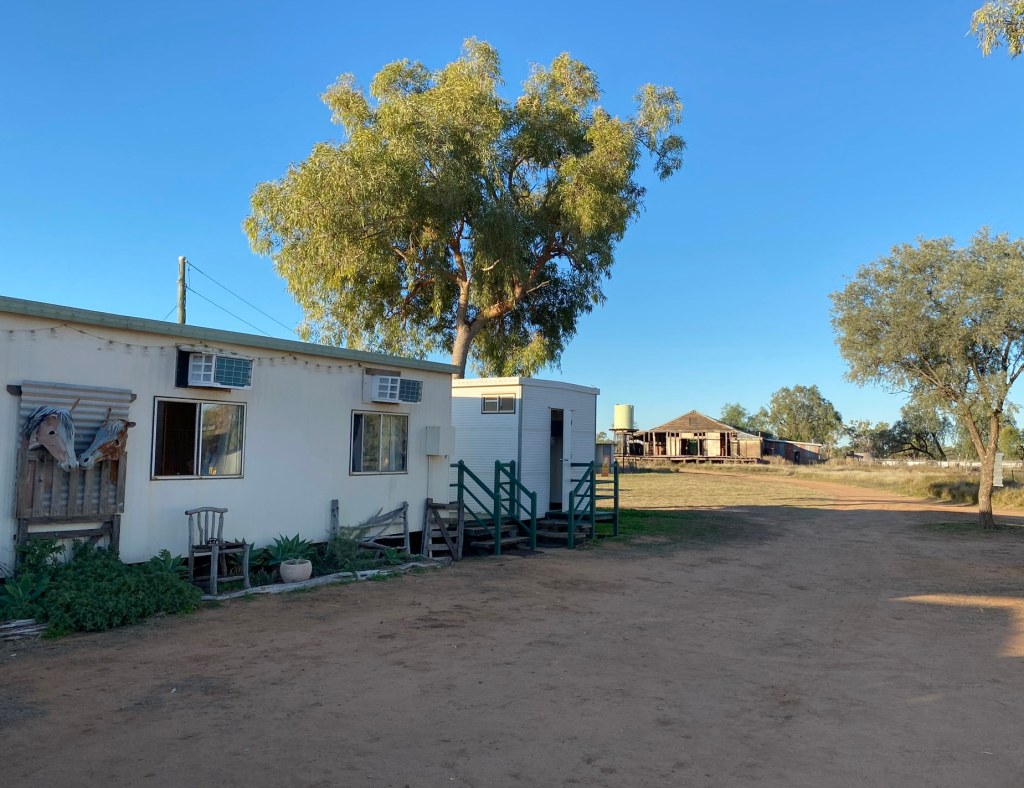
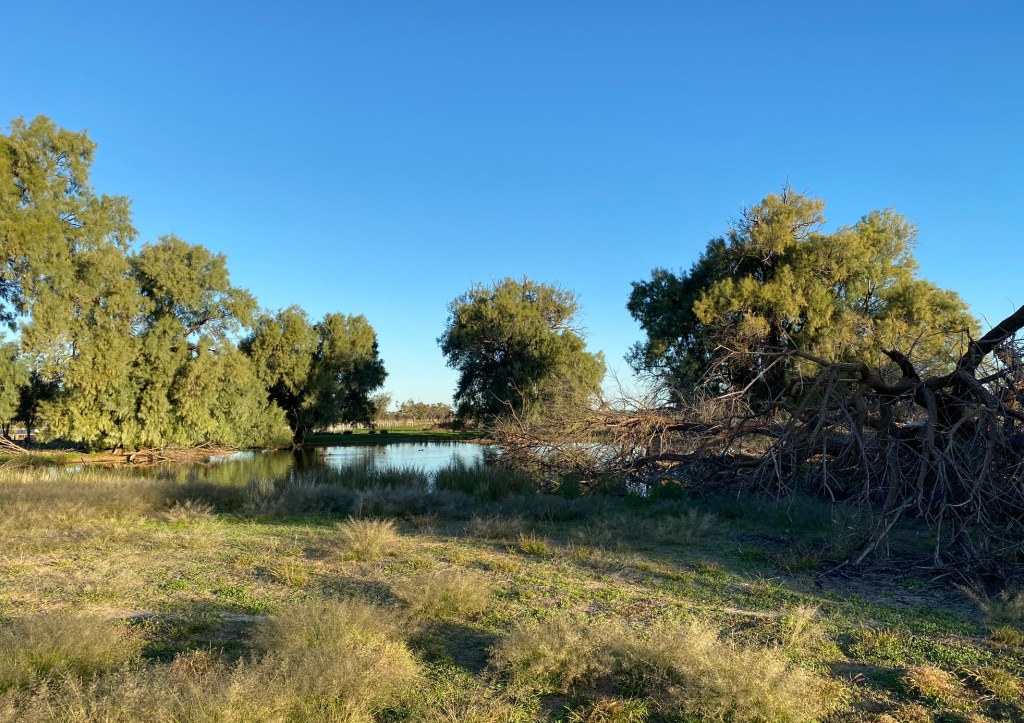
There is a lush little pond here where Zebra Finch come to drink and we saw some ducks (Grey Teals) in it as well as a very vocal Restless Flycatcher. Plenty of Welcome Swallows flitted about the area too.


We birded the area between the Shearers’ Quarters and the nearby waterway in the late afternoon and early morning, and were rewarded with sightings of Spotted Bowerbirds, Galahs, and several Brown Treecreepers (at least 10!) Like the rest of the station, it is all dead flat and sparse enough underfoot to wander around without need of official trails (do watch out for various prickles and thorns though).
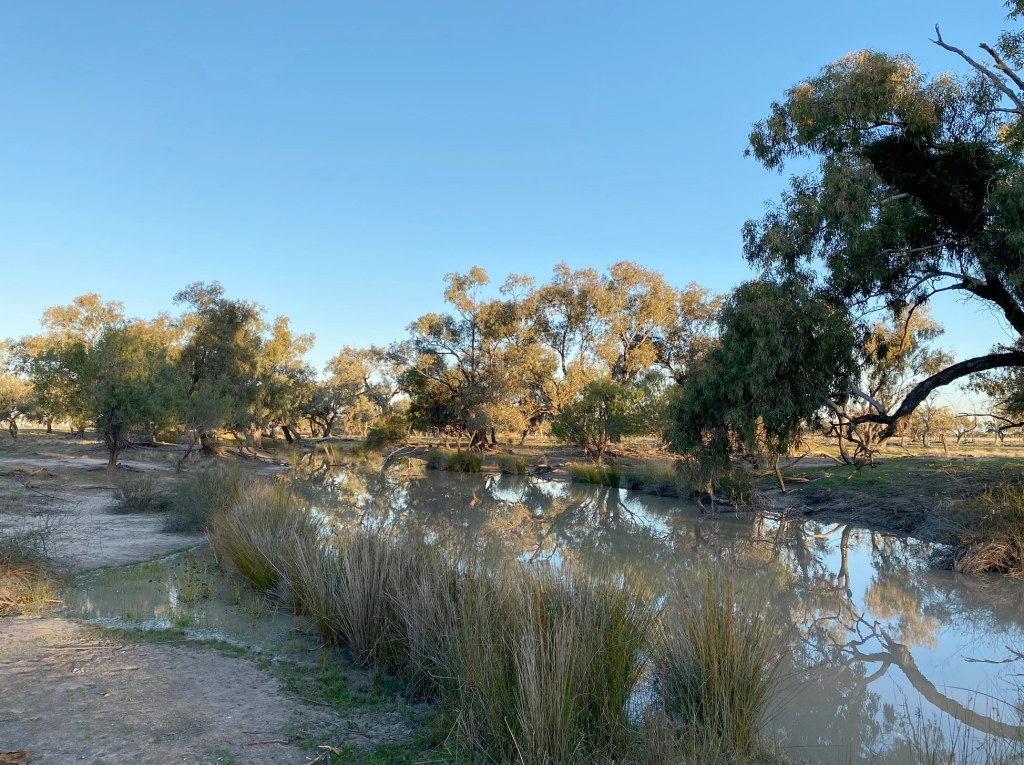
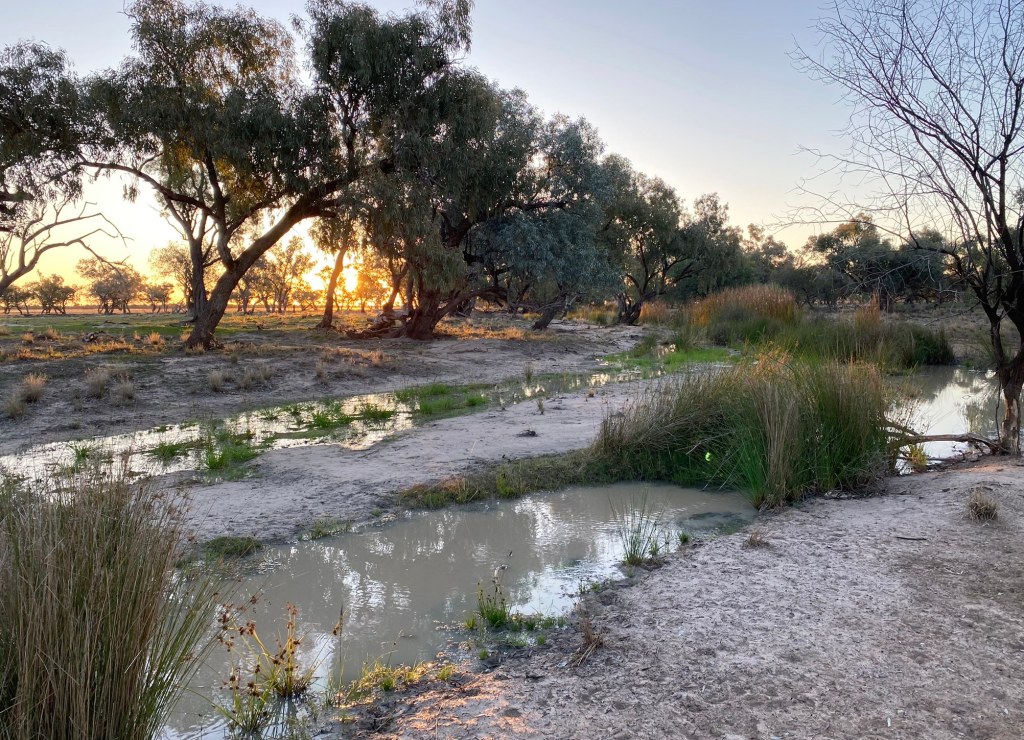

The Hooded Robins all but stole the show, as robins are wont to do, with several male and female birds hunting from various low perches (dead branches, stumps, fences). Care needed to be taken to distinguish the Jacky Winters from the female Hooded Robins (the latter have darker wings with more obvious pale panels).
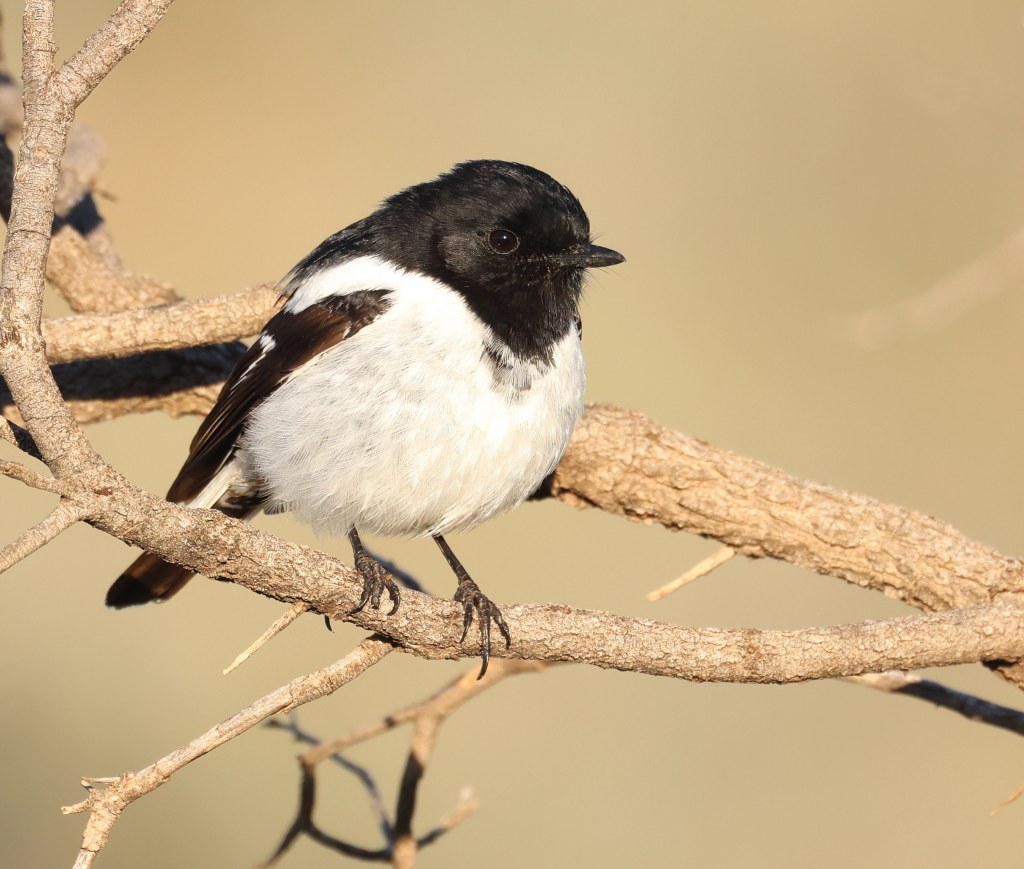
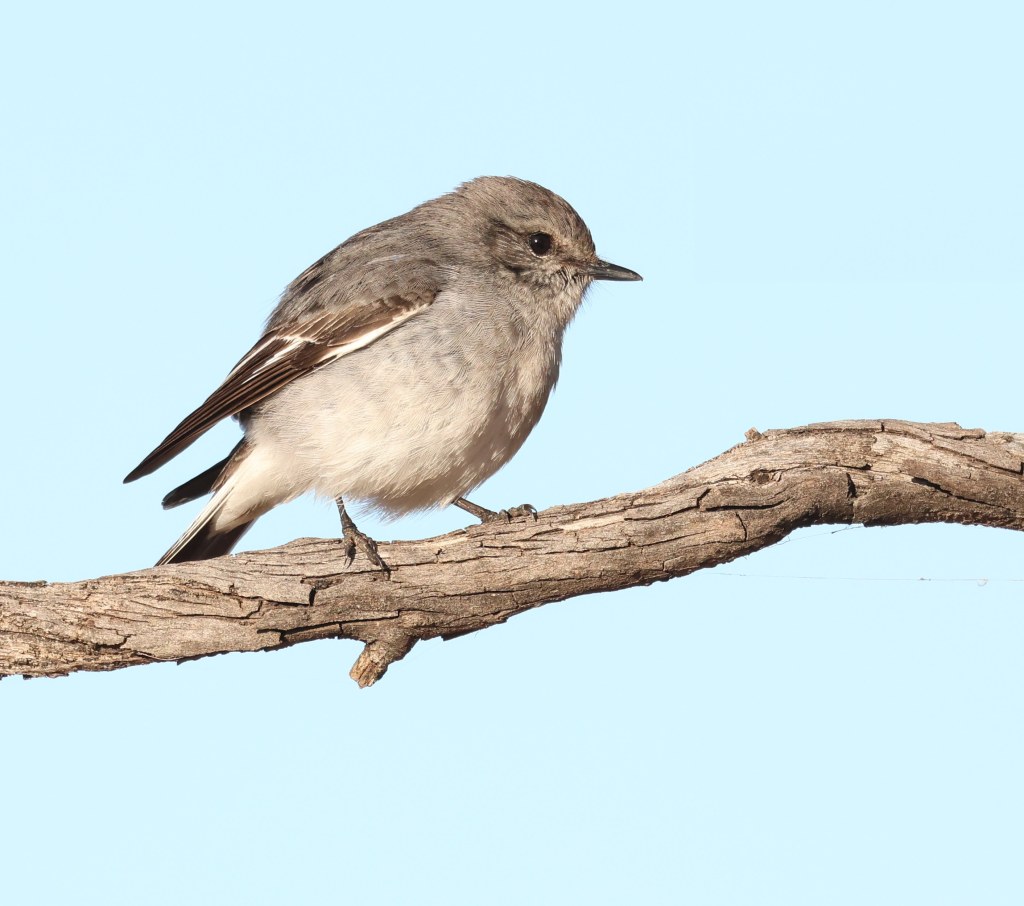
There were plenty of White-Plumed Honeyeaters in the gum trees by the water, and even a Blue-Faced Honeyeater showed up.



Yellow-Throated Miners also occupied the gum trees, but conscientious birding also revealed some Red-Rumped Parrots, while the calls of Magpies, Wood Ducks and a Crested Bellbird could also be heard. We picked up 16 species on the morning walk in just over an hour.
South of shearer’s quarters and waterhole
On the morning of July 15 we started to drive south on the 2km stretch of road from the Shearers’ Quarters to the Homestead area, and hadn’t got far when a “is that a stump or a kangaroo over there” question turned out to have a completely different answer – it was a Bustard!


We admired the Bustard casually strolling about the paddock from afar, and soon after spotted a group of Emus. While getting out of the car to check them out, we then saw a pair of Banded Lapwings on the other side of the road. These lapwings are uncommon in my experience and seeing them is always a surprise and a treat.

After the Banded Lapwings flew off (we hadn’t approached them very closely, but they were skittish), I admired the Emus for a while, and at times they also approached me curiously. They are such big animals that this was a little frightening, actually!
Slightly further along this stretch of road we indulged in some more impromptu roadside birding, having been lured out of the car again by Bluebonnets resting on a wire fence line. They took off almost immediately, but we lingered to watch a Restless Flycatcher being true to its name and hovering all over the place looking for insects to swoop down on. A Jacky Winter was much more placid, resting on the wire fence, while we also saw a couple of Tree Martins, a Spiny-Cheeked Honeyeater and – of course – more treecreepers.

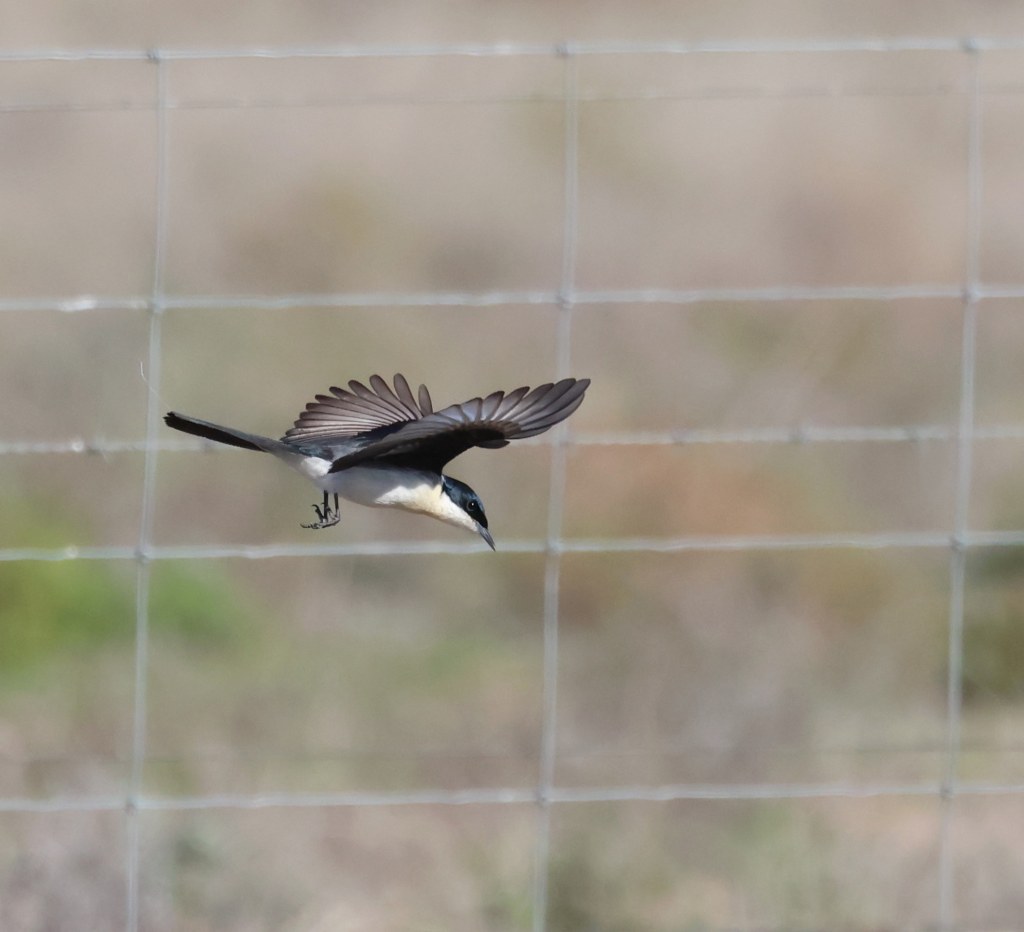

Down by the Homestead – which isn’t listed as a place of birdy interest on the station’s Birdwatching mud-map – there is a large waterhole.
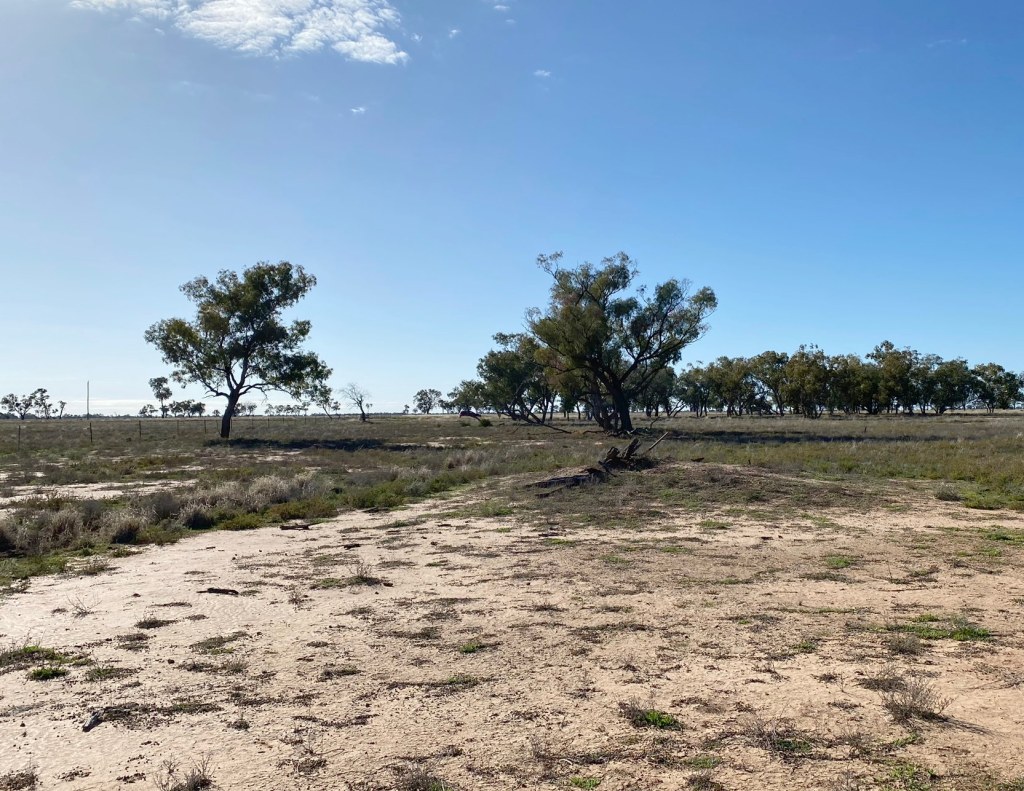

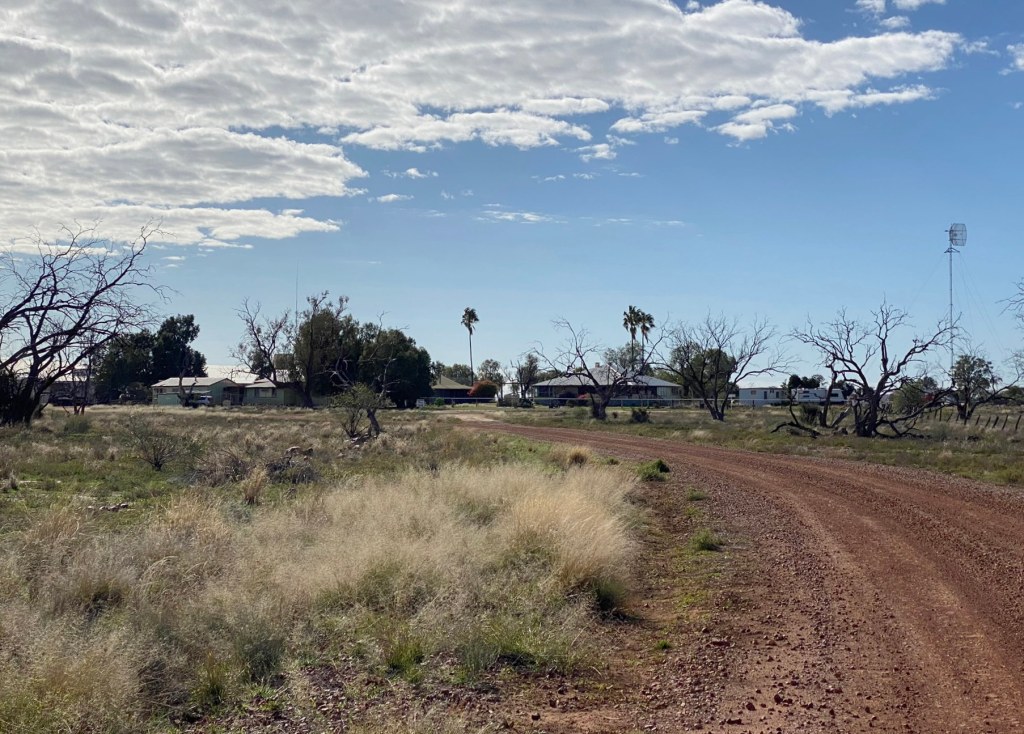
Here we found plenty of birds no doubt enjoying the proximity of lots of (albeit very muddy) water, including a White-Necked Heron. Some persistent parrot/lorikeet sounds eventually proved to belong to several Red-Rumped Parrots (dashedly hard to see in windswept gum trees), while Black-Faced Woodswallows and White-Plumed Honeyeaters were also present.



Although there was a variety of vegetation types around the water, wandering around these rough half-tracks with many items of trash, old equipment and rusted stuff like tin cans embedded in the ground wasn’t exactly my idea of a great birding time.

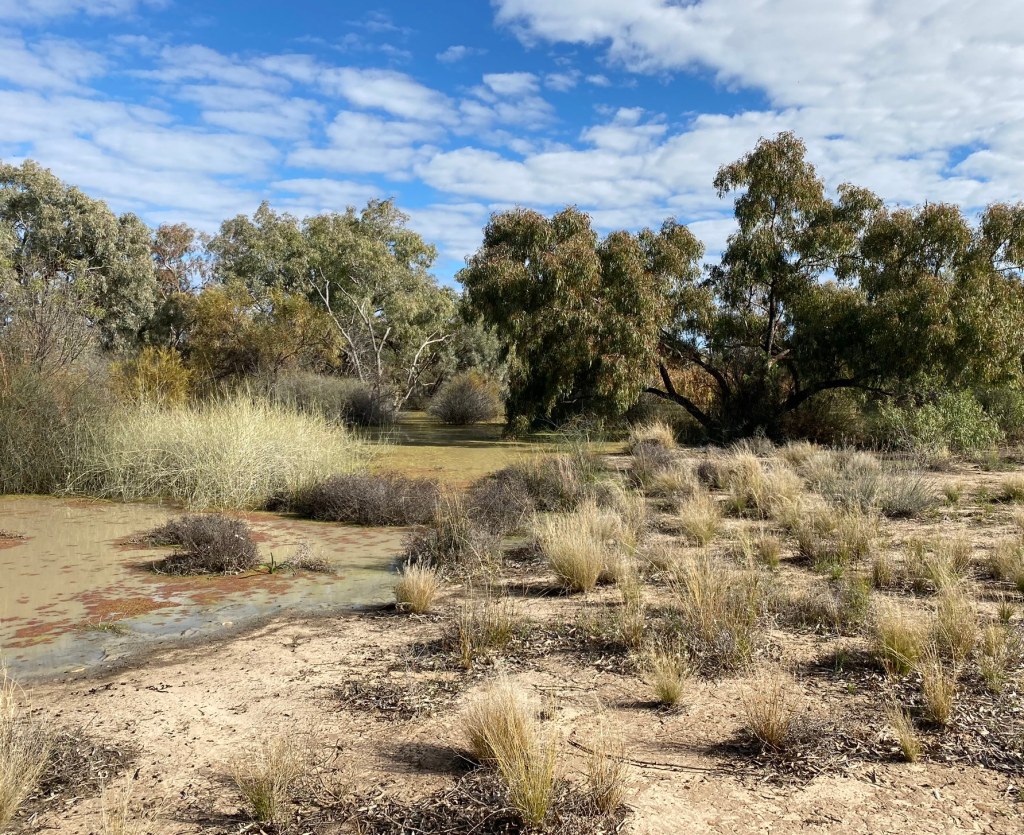

A pair of Yellow-Billed Spoonbills provided some photographic interest as they perched on a dead tree branch above the water, and at one point a White Ibis attempted to photo-bomb our shots.
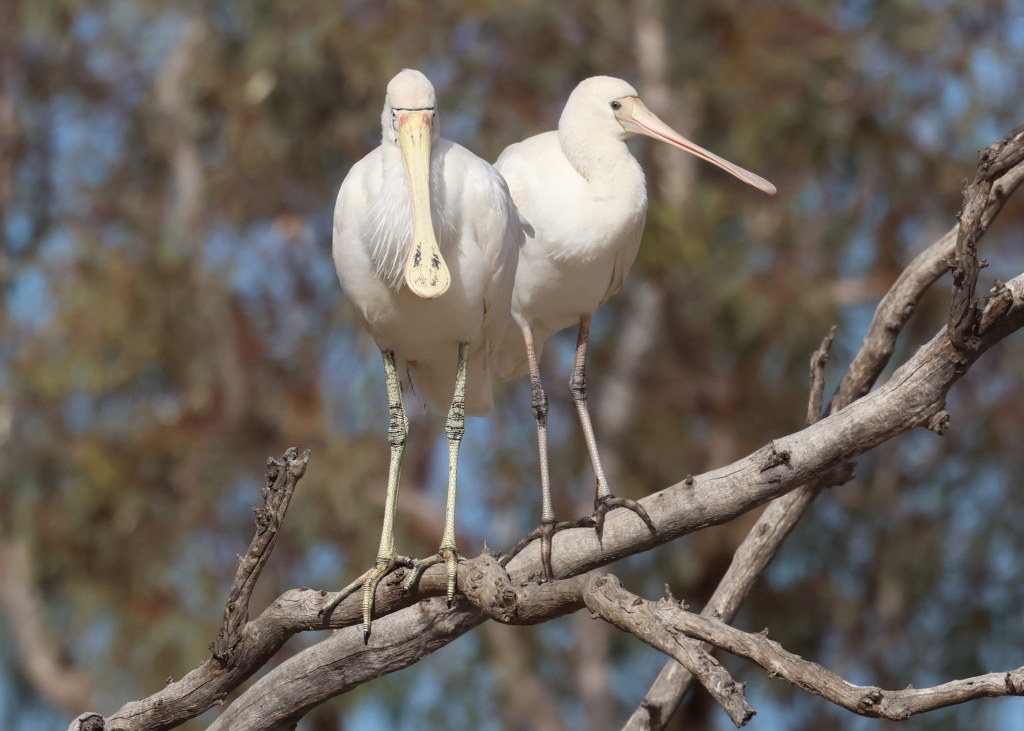
Summary
While we stayed at Charlotte Plains Station we felt like we were the only birders present. Everyone else seemed to be using it as a camping or caravanning waypoint. A comparison with nearby Bowra Sanctuary (just north-west of Cunnumulla) is inevitable: both are large properties with enough birdlife to keep birders happy for a couple of days at least, however Bowra offers a purer birding experience (it is, after all, a wildlife sanctuary rather than a cattle station) and encloses a larger variety of habitat types and hence bird species.
That said, we had a decent time at Charlotte Plains Station and managed some great bird encounters – Hooded Robins, Southern Whitefaces and Red-Browed Pardalotes in particular stood out. It definitely offers a different and much more free-for-all vibe than Bowra, which might be desirable to some.
eBird:
Note there is no general hotspot for the station as a whole.
Hotspots: Borehead Camping (133 species), Shearers’ Quarters (88 species), Homestead area (62 species)
Checklists for Shearers’ Quarters Jul 15 (16 species), Jack’s Hut Jul 15 (14 species), Willie’s Bore Walk Jul 15 (15 species), Charlotte’s Plains [mainly Willie’s Bore Walk] Jul 16 (35 species)
Pluses and minuses:
+ Large property, with waterways providing the main bird attractors
+ Plenty of bird life waiting to be discovered in easy to explore territory
+ Bathing in warm artesian bore water, if that’s your thing
+ On-site accommodation and camping options
– Most of the property is just a big homogeneous cattle station
– Not as much variety of habitat and birdlife as nearby Bowra Sanctuary
+/- Free-for-all vibe
AUTHOR: ANDY GEE
BIRDERS: ANDY GEE, LUKE S, K-A
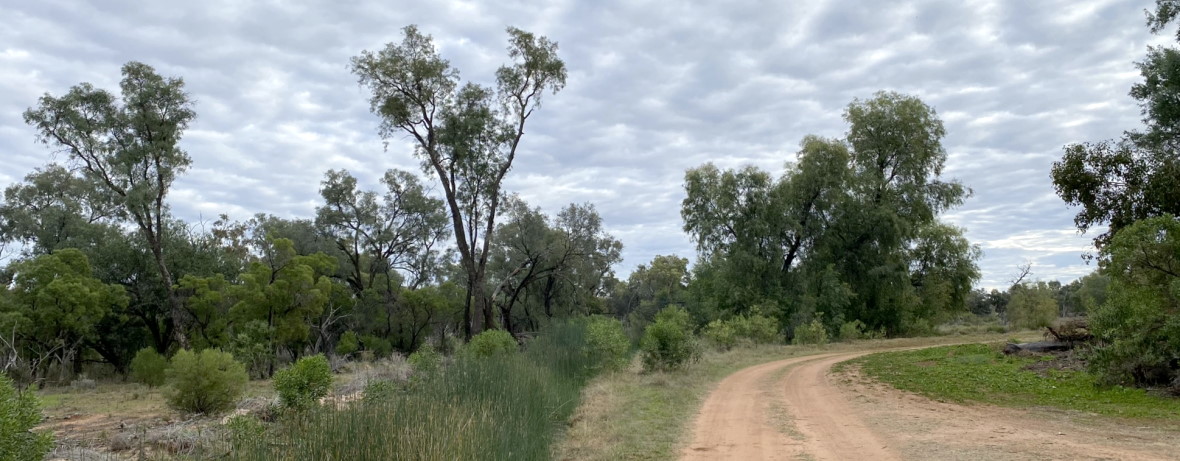
Just don’t go,there if there is a cloud in the sky. Black soil. No support if stuck. Only correspondence is by email….no damn phone coverage ! Serious problems getting people out after minor rain.
LikeLike
It is true there is no phone coverage, and there would be some problems if there was more than a little rain. That is the case with lots of places like that in the outback.
LikeLike